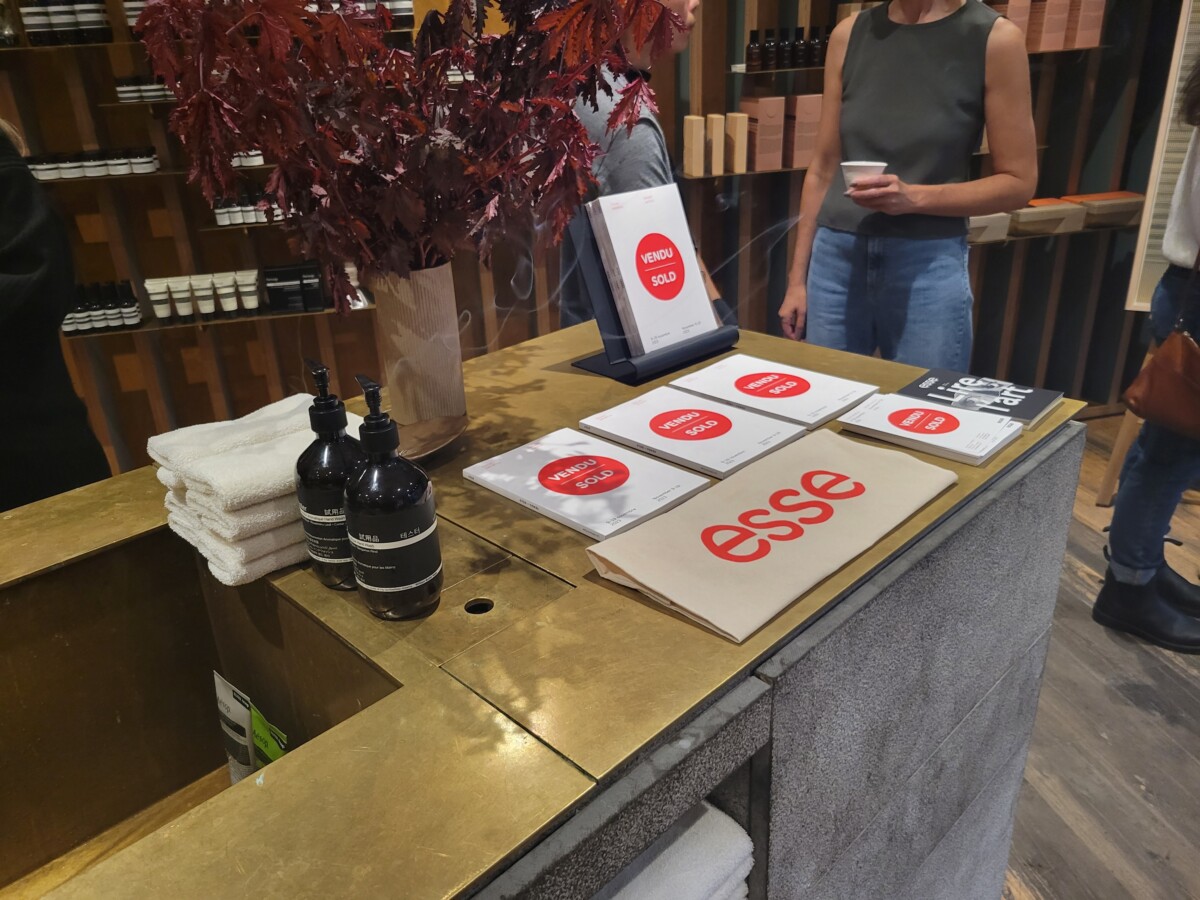The 14th annual edition of ESSE’s Vendu/Sold catalogue was launched in anticipation of their 2023 benefit auction and exhibition.
The warm and invitingly soothing atmosphere of the fragrant Aēsop boutique in Montréal’s Mile End was the perfect backdrop for this year’s launch of ESSE’s annual benefit auction catalogue. Founded in 1989, Éditions ESSE’s mission has been to give a bilingual platform to contemporary art from both Canadian and international artists working in all mediums. They are especially interested in the way art intertwines with its socio-cultural context. ESSE publishes three issues per year—each issue focused on a new and relevant theme that is explored by a panoply of artists and writers from all backgrounds.
ESSE’s team warmly welcomed the public and introduced the catalogue titled “Vendu/Sold.” The hosts distributed food, drinks, party-favours with samples of Aēsop’s skincare products and copies of the catalogue to the attendees. A selection of the latest issues of Éditions ESSE’s Magazine, ESSE arts + opinions, including their most recent release, “Eau,” were available for purchase.
Artist and Concordia MFA alumnus Jeanette Johns’ Plain Hunt on Four: 1234 was on display near the entrance of the space. The piece depicts several rows of shapes and motifs that are reminiscent of weaving while also optically challenging depth and space. John’s fascinating piece is one of 40 works made by 42 artists that will be auctioned off next month at Project Casa, an art gallery dedicated to underrepresented and local contemporary artists.
This year’s auction includes works from artists of different backgrounds, which are reflected in their art. Among them are Lan “Florence” Yee’s oil painting Cantonese Still Life (2018) and Dominique Sirois’s La Femme de Nimes 1 (2021). Yee’s painting reappropriates a Eurocentric theme, the still life, to depict several Cantonese snacks from the artist’s childhood, bringing comfort and modesty to an iconography usually known to represent western colonial riches. Sirois’s piece is a sandstone sculpture using curves and relief to represent a pair of jeans, commenting on the history of the clothing material, both symbolic of the industrial era and the sexual liberation.
Each year, ESSE elects a selection committee consisting of artists and scholars to participate in the selection process for the benefit auction. This committee reaches out to artists and invites them to have their work featured. Artists that provide their work to ESSE receive a partial sum of their work’s final auction price. The remainder of the auction’s funds are used to support Éditions ESSE’s various publications. The 2023 “Vendu/Sold” selection will be exhibited at Project Casa from Nov. 9 to 19, with free admission.
Éditions ESSE also holds an annual competition for undergraduate and graduate university students in Canada. This year’s deadline will be May 10, 2024. Students may send a short essay on an art-related theme or event relevant to ESSE’s work for a chance to be published in the fall edition of the magazine. This is an opportunity for aspiring writers to not only be published, but also work with a professional and friendly team either as a first or new experience. Learn more at ESSE’s website here.
